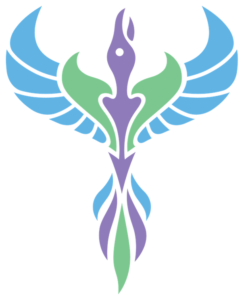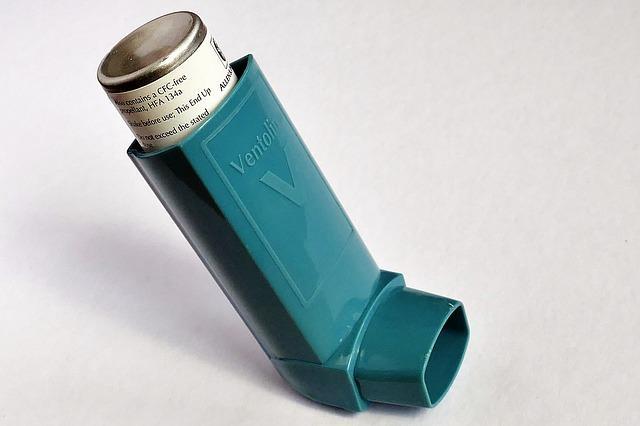Posts Tagged ‘chiropractic’
De-stressing on the Job
Start the countdown…120 seconds isn’t long but it is long enough to refresh your body and mind and return to work with a more positive and productivity-oriented perspective. Stress on the job usually centers around the concept of too much work, too little time, and while there may be various parties responsible for creating this quandary, only you can extract yourself and ensure you keep your sanity along with your job. The reason I choose two minutes is because it is just long enough to refresh, but not long enough to detract from your flow. Many people find it hard to stop when they are on a roll; when they are in the zone and don’t want to stop but find themselves slightly ripping at the seams. This is not a healthy way to operate, and sooner or later, it will take its toll. Instead take two minutes and try:
- Walking to the water fountain: get your blood circulating, your body moving for a second and finish it off with a little hydration.
- Putting on your favorite song, dancing a little jig, even if it just means looking silly in your chair: this is enormously rewarding and relaxing.
- Chewing gum or something crunchy (like an apple): the sound and rhythm of chewing has a relaxing effect.
- De-cluttering your desk
- Just looking away from the sreen
- Closing your eyes and breathing deeply: take full diaphragmatic breaths that saturate your cells with oxygen.
This isn’t about finding your happy place, it’s about keeping you mentally balanced and resilient in the face of stress. Letting stress pile on until the cow’s come home is a great way to feel spun out at the end of the day, and if you are living like this it may be time to pay a visit to your Park Slope chiropractor. We practice natural healing modalities including acupuncture and chiropractic adjustment to help regulate the nervous system and restore your musculoskeletal balance and we follow up with massage that dispels tension and promotes relaxation, improving your relationship with pain.
Dr. Karen Thomas, D.C., L.Ac.
Relaxing Made Easy
“Take a deep breath,” is an oft-repeated maxim that has lost its gravitas amidst new generations who seem to be spending more time “relaxing” than ever. But I can guarantee you that no matter who you are, stress is still cycling and tension is buidling (albeit at different rates and in differing amounts) throughout the week. Some people happen to be very proactive in their management of it, while some people have developed coping mechanisms that waylay the problem and allow them to work and play despite stress being on the fringes; still others watch their lives suffer at the hands of stress and their bodies suffer from chronically high levels of tension. At Park Slope Chiroractic, we believe that relaxation is a key to finding happiness and we want to offer you all our experience in this endeavor.
Ways to help you relax throughout the day, with your brain and body: Massage your hands and wrists, give yourself a stretch and shake out the tension every once in a while. We can show you acupressure points that can be pressurized by yourself at work to help relieve tension or pain wherever you may be feeling it.
Control your environment: not enough can be said about creating an environment that is conducive to relaxation and productivity, both at home and in the office.
Exercise: During a stressful day at work, try going for a walk outside; the more vigorous the better. eating lunch somewhere outside where you can be under the sun. Bright light and vitamin D are very effective at fighting depression and instilling mental calm.
Creative stimulation: What is your outlet? Doing something that is creative, requires concentration, or both helps you stay centered and focus on something concrete that helps your brain reset, while also bringing you pleasure for whatever you produce.
With diet:
- Green tea: for an antioxidant boost, and anger fighting properties.
- Honey: for fighting inflammation in the brain, which combats stress
Everyone could use a plan that helps them manage their own unique blend of stress during the day. At Community Chiropractic & Acupuncture in Park Slope we have many years of experience helping people find true relaxation in and outside of our office; give us a call to schedule an appointment today.
Dr. Karen Thomas, D.C.
Acupuncture for Menopause
Acupuncture is a natural and sensible choice when it comes to responding to the symptoms of menopause: from the perspective of Traditional Chinese Medicine, a momentous natural process requires a natural response to keep hormones and symptoms in balance. Symptoms of menopause that have been shown to respond well to acupuncture include hot flashes, irritability, and improving quality and quantity of sleep.
Rather than treating menopause as one specific syndome, Traditional Chinese Medicine treats its many symptoms with a multi-dimensional response. We seek out acupuncture points that correspond directly to the physical and emotional side-effects of menopause. Furthermore, by encouraging endorphin release, acupuncture helps treat chronic pain and several studies show that acupuncture is linked to an increase in nighttime melatonin production and a boost in total sleep time. While the treatment does involve the insertion of very thin needles into the skin, the effect we produce is one of intense relaxation that overrides the brief moment of discomfort during insertion.
Menopause is unique to every woman, not only because it can occur at any age, but also because the degree of symptoms varies and thus an individual treatment plan is absolutely necessary. At Community Chiropractic & Acupuncture, we begin with a conversation regarding your medical and lifestyle history to create an individually tailored plan that accounts for your emotions and needs. Through acupuncture and chiropractic treatment, we hope to promote a culture of relaxation in your life during a time of intense emotional upheaval.
Dr. Karen Thomas, D.C., L.Ac.
Breathing made Easier by Chiropractic
Asthma is a disease with a high prevalence in the population with the standard treatment response being either an inhaler or prescription medications such as inhaled steroids, which help manage the illness but rarely resolve it. While these are traditionally effective tools for providing relief from the different types of asthma, (allergy-induced, exercise-induced, nighttime asthma, smoking-induced and cough-variant asthma), some people are seeking a more natural and alternative mode of treatment that may help them deal with the root cause and ultimately resolve their condition, helping them to move on from relying on inhalers or steroid medication.
A complex disorder that involves inflammation of the airways, accompanied by bronchial constriction of the muscles along the walls of the airways, asthma is often aggravated by environmental factors which leads to the classic symptoms of shortness of breath, coughing, wheezing and can progress to a more serious degree whereby the sufferer may seek emergency medical care.
Chiropractic’s role comes in resolving spinal misalignment and determining which external or lifestyle factors may be contributing to the condition. Resolving misalignment of the vertebrae can help improve the function of those nerves involved in the respiratory system, including the ones that influence and coordinate the function of the lungs and diaphragm. By focusing on the region of the spine that corresponds to the chest, we fight back against the constriction of the airways that characterizes asthma and open up the thoracic cavity. If you have asthma, there is a great possibility that chiropractic treatment can help you breathe better. As with almost every condition, a treatment plan should always be individualized to account for your unique needs and desires.
Dr. Karen Thomas, D.C.
Stretching for Sciatica
Sciatica is no joke: the symptoms associated with sciatic nerve compression include stiffness and pain in the lower back and buttocks, tingling in numbness in the lower extremities, hip pain and weakness in the leg. The sciatic nerve is the longest in the body and influences many of the muscles on the backside of the lower body. The causes of sciatica are many and varied, including herniated disc and subluxation, degenerative bone disease, piriformis syndrome and even general instability in the sacral and lumbar regions of the spine. Chiropractic is an excellent modality for responding to sciatica because through hands-on adjustment and trigger point therapy we can release the tension and tightness from muscles that may be contributing to irritation of the sciatic nerve. Spinal traction and the associated decompression is good for alleviating the pain and impingement associated with nerve pain from herniated discs.
No matter the cause of your sciatica, almost everyone can benefit from basic strengthening and stretching in the lower back. Simple stretches that can be done from the bedroom, but will make a world of difference in your suffering from sciatica include:
- Knee to chest: simple, lay on your back with knees elevated and feet flat. Pull one leg up toward your chest and hold for 30 seconds. Repeat twice with each leg.
- Piriformis stretch (of which there are multiple varieties).
- Creating a 4: Lay on your back with legs elevated and feet flat. Cross your right ankle over the left knee and clasp your hands behind the left knee. Pull your left leg up toward your chest whilc pressing the opposite direction with your right leg. Hold this position for 30 seconds then repeat with the other leg.
- Stretching the hip flexor: start in kneeling position with left leg down. Place hands on right knee and lean into it, you should feel a stretch in the hips and the hamstrings. Hold this position for 15 seconds then repeat with the other leg.
While sciatica is not entirely avoidable, it can be eased by dilligent stretching. Try doing these simple stretches once in the morning and once before bed and feel the tension float away. If you are in too much pain to perform even these motions, it may be time to talk to a health professional about determining the root of your pain; our ears are always open at Community Chiropractic & Acupuncture of Park Slope.
Dr. Karen Thomas, D.C.
Scar Tissue
The regeneration of tissue after injury is a necessary and standard part of the body’s healing response. The same way a cut on your skin will bleed, scab and scar, a similar process happens on the inside of your body, when trauma (from acute injury or repetitive motion), causes cells to die off. Cells must necessarily regrow and the new fibrotic tissue that forms during the reparative process is often called scar tissue. The main problem is that the new tissue is, by some estimates, only 60% as elastic as the original tissue, meaning that an area with excess scar tissue can be stiff and painful. The problem is worsened when scar tissue adheres to the healthy connective tissue nearby, trapping a region and subjugating it to reduced range of motion and pain.
Chiropractic is an excellent treatment for dispelling excess scar tissue after injury. Modalities such as the Graston Technique, Active Release Technique, and Myofascial Release are effective at breaking up scar tissue and returning mobility to a region. Even simple, targeted massage can get into the knots of tensions known as trigger points and break them up. If scar tissue is adhering to healthy tissue, then there is a force actively pulling your body out of alignment and this can be easily combatted with gentle, hands-on manipulation.
At Community Chiropractic & Acupuncture of Park Slope, we can help determine if your pain and range of motion restriction is caused by scar tissue build up, and if so, treat it effectively and efficiently.
Dr. Karen Thomas, D.C.
Starting Fresh
For many people who have been exercise-free for years, entering the gym can seem like an insurmountable obstacle. The sheer amount of information available at a second’s notice regarding health and wellness can also be overwhelming and leave you feeling disenchanted. However, the blatant reality is that if you want to live longer and feel better, regular exercise is almost indispensible. Besides helping you to maintain a healthy weight, exercise is good for things like promoting better circulation and stimulating endorphins to help manage stress. If you are amongst the millions of Americans who want to feel better and look better but are at a loss as to how to start, give our office in Park Slope a call. We have found that a face-to-face, human-to-human conversation can be the catalyst you need to get motivated and excited about working out. Here’s how:
- A clear plan: the main benefit of interfacing. There is no grey area or internet overload; we hash out your health goals, your priorities and limitations and go about setting up a plan to deal with achieve success in a concrete manner.
- Starting slow: what are you comfortable with? What are your strengths and what do you absolutely detest? Not everyone is cut out to be a gym rat, but almost everyone can find their happy place with specific workouts and stretches.
- Accountability partner: this is key. Great things are built by teams, and we want to be your go-to-resource for information, chiropractic care, acupuncture and accountability.
- Managing pain: Certainly working out is made miserable by pain. If an injury or chronic pain is holding you back, we need to correct this so you can stop using pain as an excuse.
A fresh start is attainable if you go about it the right way. As a doctor of chiropractic and acupuncture, I am completely invested in your health and well-being. Let’s start on a path toward a healthier, happier you together and let’s start today.
Dr. Karen Thomas, D.C., L.Ac.
Chia Chia Chia
What if 2 tablespoons of some magical ingredient per day could fortify your bones, regulate your nervous system, and combat inflammation in joints? I can tell you that this prospect would make a chiropractor and acupuncturist very excited. Fortunately, this is not a mere pipe dream: the ingredient is sold in most health food stores and goes by the name of chia seeds. These little black seeds, derived from the Chia plant are dietary superstars.
1 ounce equates to roughly 2 tablespoons and this is what you will find:
- 4 grams of (clean) protein
- 11 grams of fiber
- 9 grams of (healthy) fats, half of which comes from omega-3s.
- Varying percentages that contribute to your RDA for: manganese, phosphorous, calcium and magnesium, all of which are important for bone density.
The best part is that they are tasty: you can mix them into just about any meal and barely notice a difference in flavor or texture. Mixing them into hot foods helps to break them down from a dry seed to a mushy consistency so you barely notice they are in the food at all. But your body will notice and you will feel an uptick in functions across the board. For people managing conditions relating to chronic inflammation, the regular administration of omega-3s is essential. They are also chalk full of anti-oxidants which help fight the oxidation of other molecules in the body.
Dr. Karen Thomas, D.C., L.Ac.
Bed Rest No Longer
Bed rest was once the prescribed course of treatment for many debilitating injuries involving back pain and stiffness, including: herniated discs, pulled muscles, muscle spasms and spondyloisthesis, among others. However, time has shown that bed rest can actually be counterproductive to health plans that are attempting to heal an injury and return the sufferer to a, “normal level of activity.” With all but the most serious of back injuries, a health plan that includes a good deal of low-impact activity and stretching is now considered the key to a successful recovery.
Bed rest can actually delay recovery because it perpetuates a system whereby muscles atrophy and supportive soft tissues weaken. Consider the example of a herniated disc in the lower back, where pain is severe enough to dissuade the sufferer from attempting any activity. As days pass by spent in the illusory, “comfort,” of the sofa and bed, muscles in the core weaken from lack of use, meaning that they cannot be reliably called upon to share the burden of the upper body’s weight with the intervertebral discs. Furthermore, those same discs are losing water and stiffening which makes them vulnerable to injury.
It seems ridiculous to say, “just get up and get moving,” in this sense. But to give this sufferer the best chance of a successful rehabilitation, we need to help them move somehow depsite the pain. We provide the chiropractic adjustment, acupuncture treatment, spinal decompression, therapetuic massage, and other modalities that will address the injury and reduce pain. From here, we show you how light aerobic activity such as swimming or walking, when combined with proper nutrition and a good dose of stretching, can help you heal quickly and return to a state of normal activity.
Dr. Karen Thomas, D.C., L.Ac.
Protect Your Neck with Acupuncture
How is your neck feeling these days? There is no getting around it; necks are fragile structures and neck pain is a common complaint in our office. Regardless of statistics, there are very few adults who could honestly say they have never felt a twinge of pain in their neck. Much of this pain is a manifestation of muscle strain, ligament injury and nerve compression, all of which respond well to the treatment modalities we offer at Community Chiropractic and Acupuncture in Park Slope. While treatment depends on personal preference, I would like to give you some reasons why acupuncture is a viable and extremely effective method of treatment for neck pain.
Western medicine is successful in many cases relating to neck pain, but there are chronic conditions that continue to elude more widely accepted methods in the US. With acupuncture, we use the insertion of needles to stimulate specific points of the body, creating a therapeutic effect. As a natural pain-killer, it is immensely effective: by stimulating endorphin release, the pain is masked. Furthermore, it inhibits the nervous system from sending pain signals to the brain. We focus on stopping the pain first, so that we can use other modalities, including chiropractic adjustment, to improve range of motion and reduce inflammation.
Chronic neck pain is a blight on anyone’s life. Treating with over-the-counter medication is only scraping the surface. If you are looking to find the cause of your persistent pain and start treating it naturally, give our office in Park Slope a call.
Dr. Karen Thomas, D.C.










